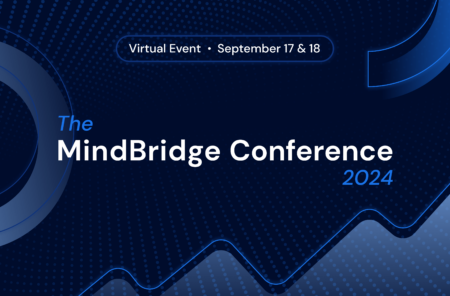With the audit season fast upon us, a person stops to think about ‘reasonable assurance’.
Audit standards such as AU-C 240, CAS 240 and ISA 240 stipulate that “…an auditor has a responsibility to plan and perform the audit to obtain reasonable assurance about whether the financial statements are free of material misstatement, whether caused by error or fraud.”
‘Reasonable assurance’ is a term used in industry standards and the audit profession to render an opinion as to whether financial statements are free of error, or in some cases, fraud.
An article published by The Institute of Chartered Accountants in England and Wales (ICAEW) defines ‘reasonable assurance‘ as “…the level of confidence that the financial statements are not materially misstated that an auditor, exercising professional skill and care, is expected to attain from an audit.”
To render a reasonable level of confidence, auditors rely on many factors including the following three key items:
- Professional skepticism
Professional skepticism requires a questioning mind and being alert to conditions which may indicate possible misstatement.
The Public Company Accounting Oversight Board (PCAOB) standards define ‘professional skepticism’ as “…an attitude that includes a questioning mind and a critical assessment of audit evidence, and it is essential to the performance of effective audits under Board standards.” - Sample selection of financial transactions
Given the volume of financial transactions, a sampling methodology is used to analyze the datasets. As it would be labor-prohibitive and not cost efficient to review all transactions manually, a sample selection of the dataset is identified.
There are two general approaches to ‘audit sampling’: non-statistical and statistical. Both approaches require that the auditor use professional judgment in planning, performing, and evaluating a sample and in relating the evidential matter produced by the sample to other evidential matter when forming a conclusion about the related account balance or class of transactions. - Testing of the selected sample of financial transactions
Traditional computer-assisted audit techniques (CAATs) that are used to perform tests on financial transactions are typically based upon rules. Rule-based testing requires knowledge of the rule to detect and, in the case of traditional software, technical skills to script the rules. Rules-based systems can’t catch unanticipated scenarios—and, in many cases, the rules themselves can be exploited—making this type of detection increasingly inefficient, not to mention labor-prohibitive to review all transactions manually as mentioned previously.
Each one of the above components is subject to human bias.
As evidenced through countless high-profile cases, and some not so high-profile cases, the fact that clean audit reports were given to many failed or failing companies supports the argument that the current method of asserting ‘reasonable assurance’ must be improved.
In fact, just last week, the U.S. Securities and Exchange Commission (SEC) unanimously approved the PCAOB’s new auditor’s reporting standard, supporting the communication of “critical audit matters” as a way for auditors to provide more information to investors and the public.
As defined in the PCAOB standard and related amendments, critical audit matters are any matter arising from the current period’s audit of the financial statements that was communicated or required to be communicated to the audit committee, and that:
- Relates to accounts or disclosures that are material to the financial statements, and
- Involved especially challenging, subjective, or complex auditor judgment.
Further compounding the problem over the last decade are the growth and adoption of:
- The Internet
- Hackers
- ERP systems with multiple touch points
- Big Data
The combination of these issues further hampers the ability to assert high-levels of confidence that rely solely on human, professional experience.
With the advancements of technologies such as artificial intelligence (AI) that are now available in the market, professionals, including auditors, must augment their capabilities with the power of AI to sift through and analyze large amounts of data.
At MindBridge™ Ai, we remove subjective, human bias from the audit process and perform a full coverage analysis using a hybrid of tests against the complete financial transaction dataset.
The automated analysis of the financial datasets is performed by the MindBridge Ai Auditor™, which combines a hybrid of algorithm-based business rules, statistical models, machine learning and artificial intelligence.
Through the analysis of 100% of the records in the datasets, a ‘risk score’ is generated for each transaction to highlight those that warrant further investigation.
The results are presented to the user in an intuitive, visual interface which augments the capabilities of audit and investigative professionals by allowing them to focus their analysis on the most relevant activities.
By performing an analysis and associating a ‘risk score’ on all financial transactions, coupled with MindBridge Ai’s intelligent statistical sampling capabilities, MindBridge Ai has elevated the definition of ‘reasonable assurance’ to help auditors ensure financial data is free of errors, and potentially intentional misstatement.
Here’s what customers are saying about the MindBridge Ai Auditor.
“The MindBridge Ai Auditor™ enables our team to pinpoint unusual transactions and enhances the thoroughness and precision of our analytics. Investigations that have historically involved months of combing through millions of transaction samples are now much more comprehensive—yet more narrowly focused—and can be concentrated in just hours.” (full text here)
“Rather than our trainees using random number sampling or a sample based on what they deem to be risky transactions, MindBridge ranks all of your transactions on a risk rating, and then depending on whatever the sample size is you pick it gives you, say, the top ten riskiest transactions.” (full text here)
“The machine learning capabilities of MindBridge Ai Auditor are unique in the audit field and go well beyond the capabilities of any data analytics technology we’ve seen for the full audit profession” (full text here)
“MindBridge’s tool demonstrated it can usefully detect anomalies in datasets. Its user interface is intuitive and presented the data visually, allowing the user to explore a time series of each variable, whilst comparing the result to the industry average.” (full text here)
If you’re interested to learn more about MindBridge™ and our Ai Auditor™ platform or would like to run your own A/B test, please visit www.mindbridge.ai.




